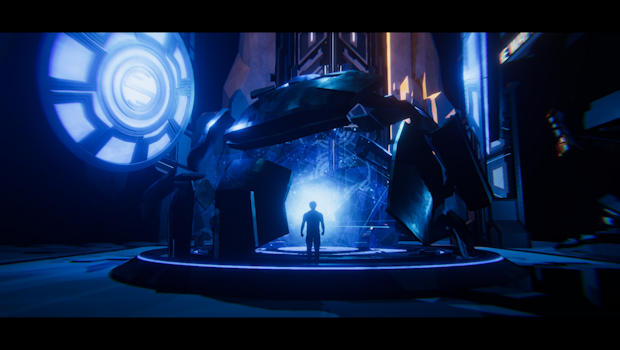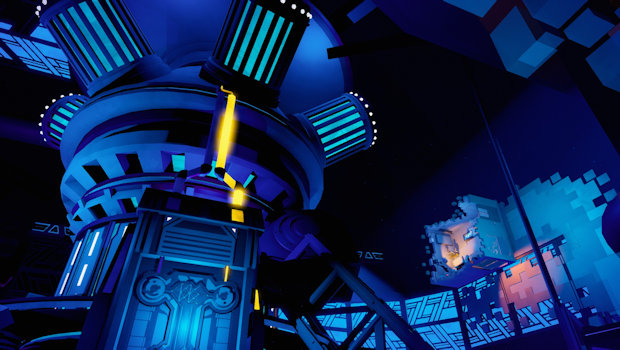The year is 3044 and the Earth is in dire condition. Hundreds of years ago, aliens came and stole all the surface water leaving humanity for dead. Humanity struggled forward though. surviving by mining the last remnants of Earth’s water underground. However, soon the Earth will be without water entirely and we’ve sent the best, brightest, and most fierce among us to go take back what has been stolen from us. The journey to Primus Vita takes four years and that the crew needs to go in to cryosleep to make the trip. It’s a pretty cool concept.
Now, what if I told you that the game takes place in your head while you are in cryosleep? Because that is how Destination Primus Vita – Episode 1: Austin plays out. Destination Primus Vita is a narrative adventure game with a mix of seek and find gameplay and logic puzzles.
The ship AI, NIM, stimulates the mind of Austin, the lead scientist on the mission, and helps her deal with some of her emotional issues to make here a better member of the crew once they arrive. NIM has come up with a series of puzzles for Austin to solve based on what the crew is likely to experience on Primus Vita. In between these puzzles, NIM exposes Austin to memories of interactions with her other crew members to help her relate more to them and understand her own deficiencies.
The bounce between logic puzzle and psyche seek and find works quite well. The puzzles are never impossible but when you are done taxing your brain against one, exploring a memory of Austin’s by clicking on objects and unlocking exposition on her relationships is a nice change of pace. The puzzles themselves are generally built around a large area that deals with a certain challenge Austin will have to face on her actual mission. All these areas have clues in the area that can point you towards the solution or at least explain the rules but they aren’t necessarily needed though as the puzzles can be solved without them.
The relationship pieces are nice little diversions and showcase Austin’s flaws as a character. She jumps to conclusions and is often selfish in her pursuit of her goals. She also has a very difficult time dealing with others and getting close, including her brother. This all plays out nicely as Austin’s character begins to take shape. I came to really like her by the end and could relate to her flawed sense of responsibility while also not wanting to open herself up to those she cared about for fear of losing them.
And changing pace between both of these gameplay arenas is a series of quick time events that set a cinematic tone for the game, lending an air of excitement to the game. QTE’s often get a bad rep but they are used here sparingly and correctly here. Destination Primus Vita is not an action game and tasking players with performing the actions in the QTE would have stopped many people in their tracks so some nice, and forgivingly timed, button presses make this work just right.
I enjoyed the game as a whole for the most part but one thing rubbed me the wrong way and actually left me feeling ill. The design of the large playable areas are often spherical or cylindrical, where the floor can actually be the ceiling in a different location. This in itself is fine and I’ve experienced it in other games, where Destination Primus Vita did something I hadn’t experienced before was when it flattens out the camera for rooms off the sphere or cylinder. This causes a jarring and shaky effect that left me feeling woozy by the end of my playthrough. I’ve never experienced this in 35 years of gaming and countless hours of first person games.
Nausea aside though, Episode 1 of Destination Primus Vita sets up something that could turn out to be pretty cool if the remainder of the episodes hold up to this quality. Austin’s mental exercise here is mostly good fun with an interesting premise, decent character work, a strong narrative, and solid puzzles. And if the nausea thing is just a me issue, then this is an easy recommend for adventure game fans.
This review was written with material provided from the developer for the PC. For more on our review process, please read here.


